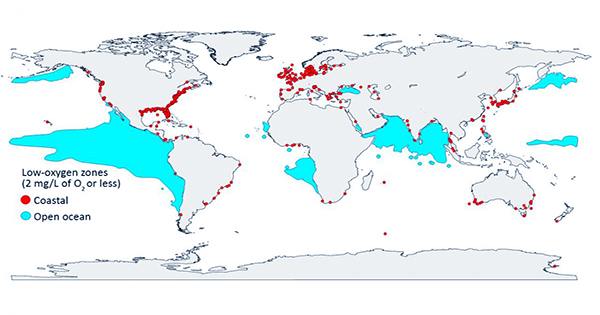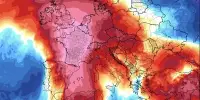The effects of human feces on coastal locations have been laid out in new research, and beach vacations will never be the same again. Researchers discovered that effluent from human sewage delivers 6.2 million metric tonnes of nitrogen into coastal ecosystems each year, according to a study published in the journal PLOS 1. Up to 63 percent of the nitrogen in this system originates from processed sewage, 5% from septic systems, and 32% from untreated input (ie. poop just going straight into the sea).
Nearly half of all wastewater nitrogen is contributed to only 25 watersheds. These watersheds were mostly in India, Korea, and China, with China’s severely polluted Yangtze River accounting for 11% of the global total. Although most sewage treated in most parts of the world, raw sewage remains a major issue in other countries, such as China, India, and a number of African countries.
“The magnitude of wastewater’s impact on coastal ecosystems throughout the world is mind-boggling,” the study’s authors stated in a statement.”However, because we map wastewater inputs to the ocean over 130,000 watersheds, our findings suggest key priority locations to aid marine conservation groups and public health officials in collaborating to lessen wastewater’s impact on coastal seas across the world.”
To reach these results, scientists at the University of California, Santa Barbara, have used geospatial-modeling maps to extract nitrogen and pathogen inputs from sewers the sea at approximately 135,000 locations around the world; this will very certainly have a negative impact on public health, particularly in locations where wastewater output is particularly severe. It is, nevertheless, extremely likely to have a negative impact on marine life. Although nitrogen is a vital nutrient, high amounts of it may be exceedingly destructive to the seas because it encourages toxic algal blooms, which produce eutrophication and ocean dead zones.
The researchers identified regions containing coral reefs and seagrass that were also meeting nitrogen output hotspots. They discovered that sewage outlaws are likely to affect coral in China, Kenya, Haiti, India, and Yemen, with seagrass exposure hotspots in Ghana, Kuwait, India, Nigeria, and China.
This, on the other hand, might simply be the tip of the iceberg, with implications for the rest of the ecosystem. “Pathogen and nitrogen wastewater imports into coastal waters pose clear threats to coastal ecosystems, human health, and economics across the world.”
“Our findings show that wastewater imports are likely to interact with a variety of anthropogenic stresses on coastal ecosystems, resulting in diminishing fisheries, habitat loss and degradation, and human health impacts,” the research says.














